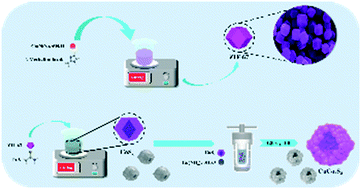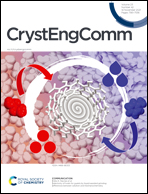3D hollow cage copper cobalt sulfide derived from metal–organic frameworks for high-performance asymmetric supercapacitors†
Abstract
Metal–organic frameworks (MOFs) have been attracting considerable attention due to their large specific surface area and excellent adjustable voids. A one-step solvothermal method is proposed herein to fabricate 3D hollow cage copper cobalt sulfide CuCo2S4via sulfuration and cation exchange reaction based on MOF ZIF-67. The ternary bimetallic material CuCo2S4 not only retains the spatial structure of ZIF-67 but also adjusts the hierarchical hollow structure by adding a Cu “shell”. The hollow cage CuCo2S4 can typically exhibit large specific surface areas, expose additional electroactive sites, and shorten ion/electron diffusion paths. The physicochemical characteristics are comprehensively determined using basic characterization techniques. As an electrode material for supercapacitors, CuCo2S4 has a high specific capacitance of 1096.27 F g−1 at a current density of 0.5 A g−1. Furthermore, an asymmetric supercapacitor (CuCo2S4//AC ASC) device is assembled to prove the practical applicability, and the energy and power densities, respectively, reached 87.59 W h kg−1 and 399.65 W kg−1 at 0.5 A g−1. This device retains 95.83% capacity over 5000 cycles at a current density of 10 A g−1. The proposed method provides an optional protocol for designing and fabricating electrode materials with superior electrochemical energy storage properties and exceptional cyclic stability, presenting additional options for future energy storage devices.

- This article is part of the themed collection: Nanomaterials


 Please wait while we load your content...
Please wait while we load your content...